■Underwater movement and practical skills
The leader should gather all participants on the seabed, ensure that everyone has adequate air supply, and check for any abnormalities. Once confirmed, the underwater movement can begin.
Also, maintain eye contact and constantly check for any signs of stress among participants during underwater movement.
Be flexible in changing the planned diving route according to participants with low remaining pressure.
The return route may not necessarily be the same as the outbound route.
Sometimes we may take a shortcut to reach the exit point, so always be aware of the direction to the exit point and the remaining pressure of the members.
Always keep all participants within sight for monitoring and maintaining class control.
The leader at the front or the assistant at the rear should conduct a headcount of all participants. In case buddies become separated or there is trouble, use underwater horns or similar devices to signal everyone.
In the event that a participant becomes separated from the team, the assistant will conduct the search while the leader ensures the safety of the other participants.
If a participant experiences issues such as a tank coming loose, the assistant will address individual problems while the leader maintains class control and monitors the situation of all participants.
■Ascent procedure
Confirm that there is sufficient remaining pressure for the ascent.
If there is an assistant, he will ascend at the front.
If there is no assistant, the leader will ascend at the front.
The leader should ascend while ensuring that no participants are left on the seabed.
If a participant experiences reverse block during ascent, return to a depth where he no longer feel discomfort and then ascend slowly.
Let's focus on safety stops.
When the leader is holding the rope, he should ascend while coiling the rope.
Coiled ropes should be tied off at the surface to prevent them from getting tangled in the boat's propeller or other parts.
If a surface float is not being used, the assistant (or the leader if no assistant is available) should deploy a signal float to the surface from a safety stop depth of 5 meters to warn the boat and prevent contact during surfacing.
The assistant (or the leader if no assistant is available) should ensure safety on the surface before giving the signal for everyone to surface.
Ensure that everyone is surfacing near an assistant (or the leader if no assistant is available).
|
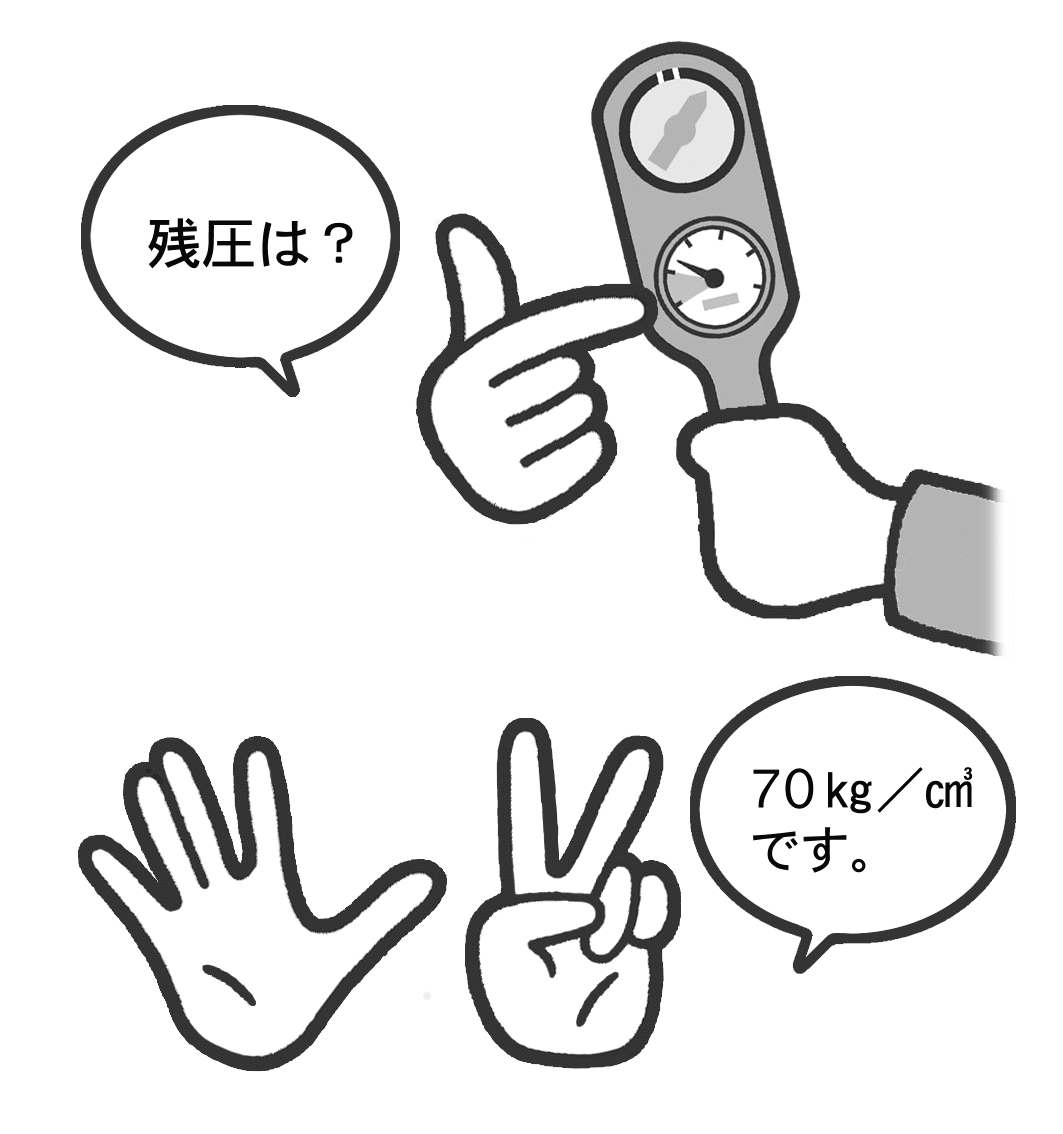
Remaining pressure OK?

Are there any participants with owl-like eyes?
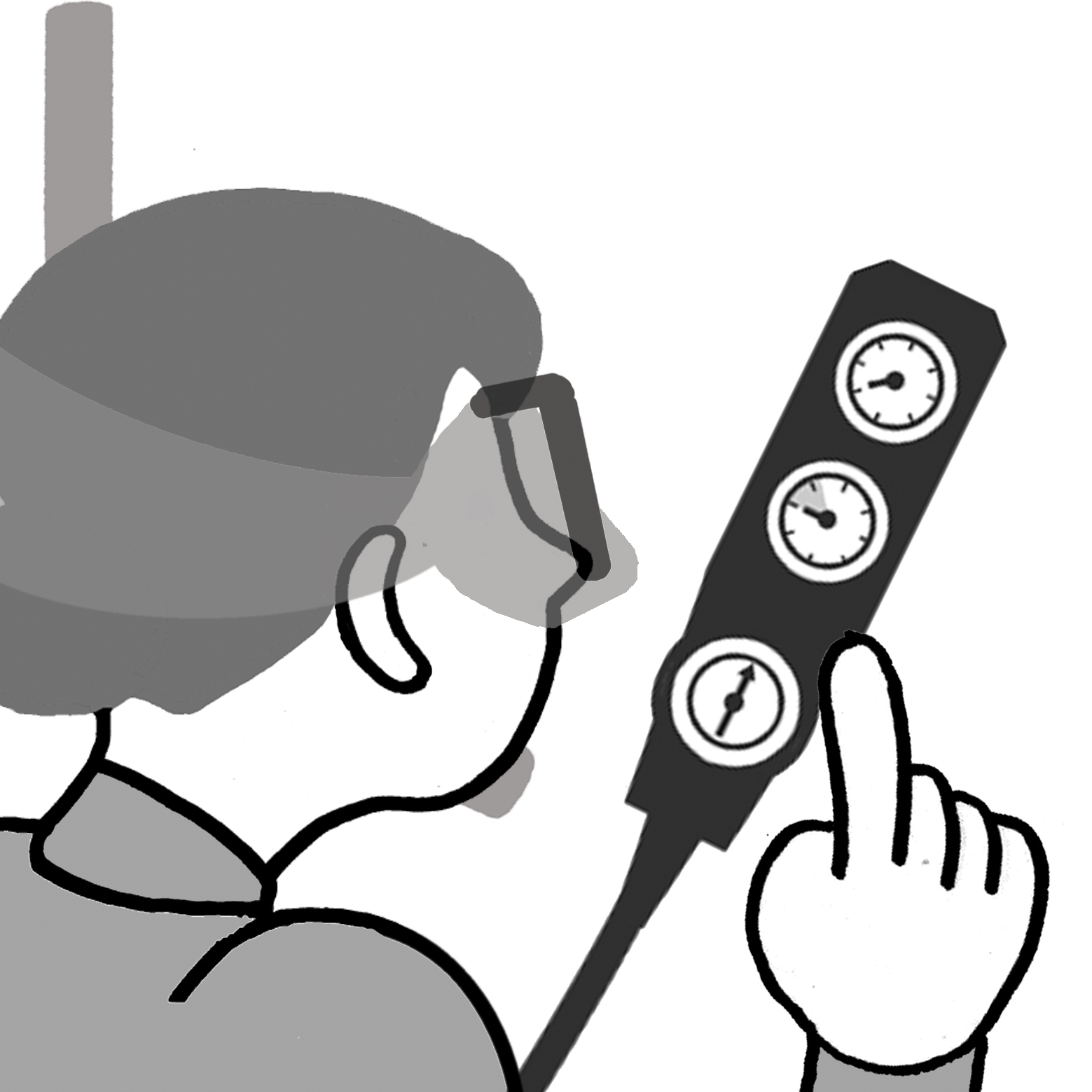
Is anyone stuck just looking at the gauge?

Always check the direction and remaining pressure.


Ensure that no participants remain on the seafloor.

The leader ascends while coiling.

Use your elbow as a fulcrum for the coil.



Secure it with a clove hitch.
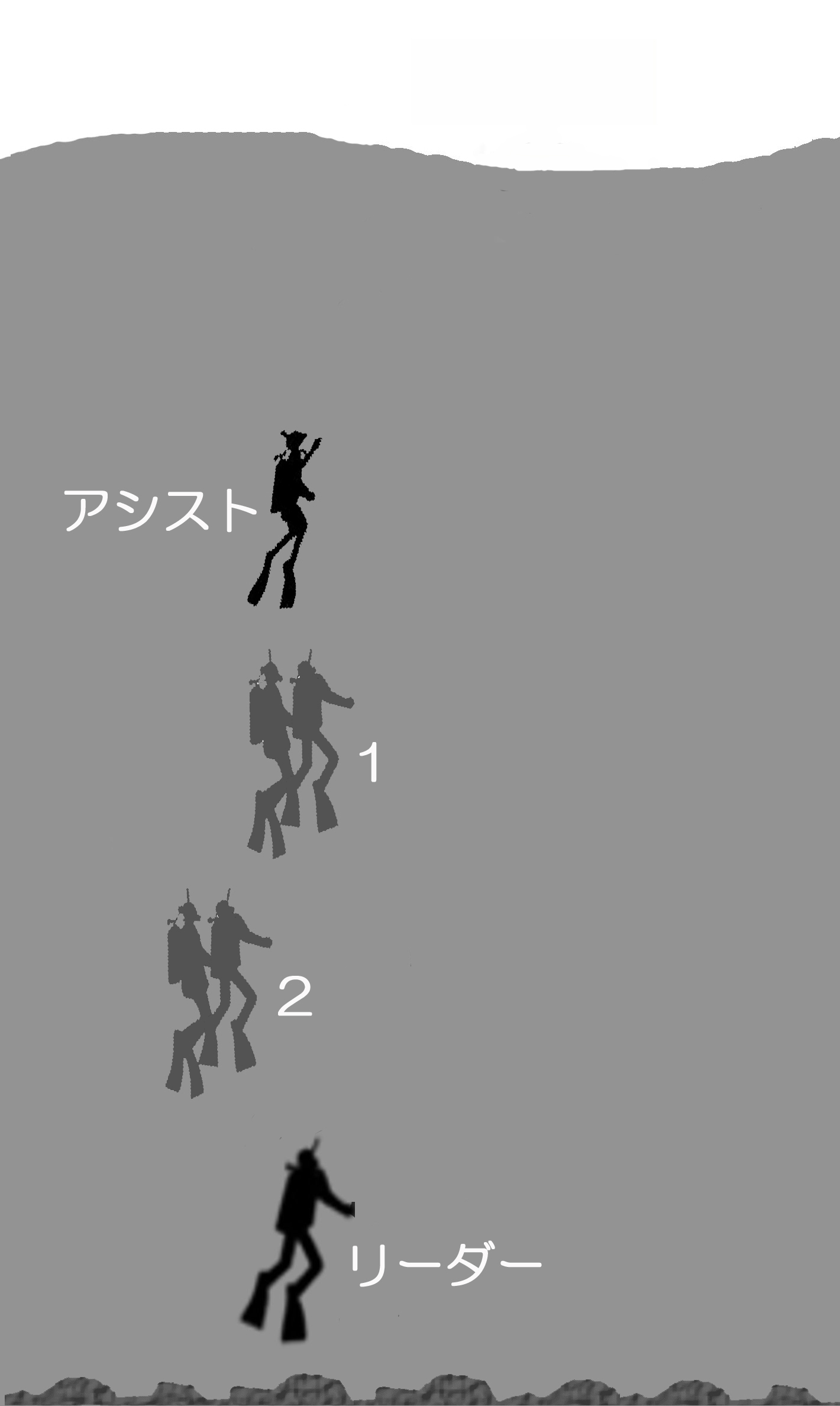
The assistant (or leader if there is no assistant) conducts a safety stop at 5 meters deep.
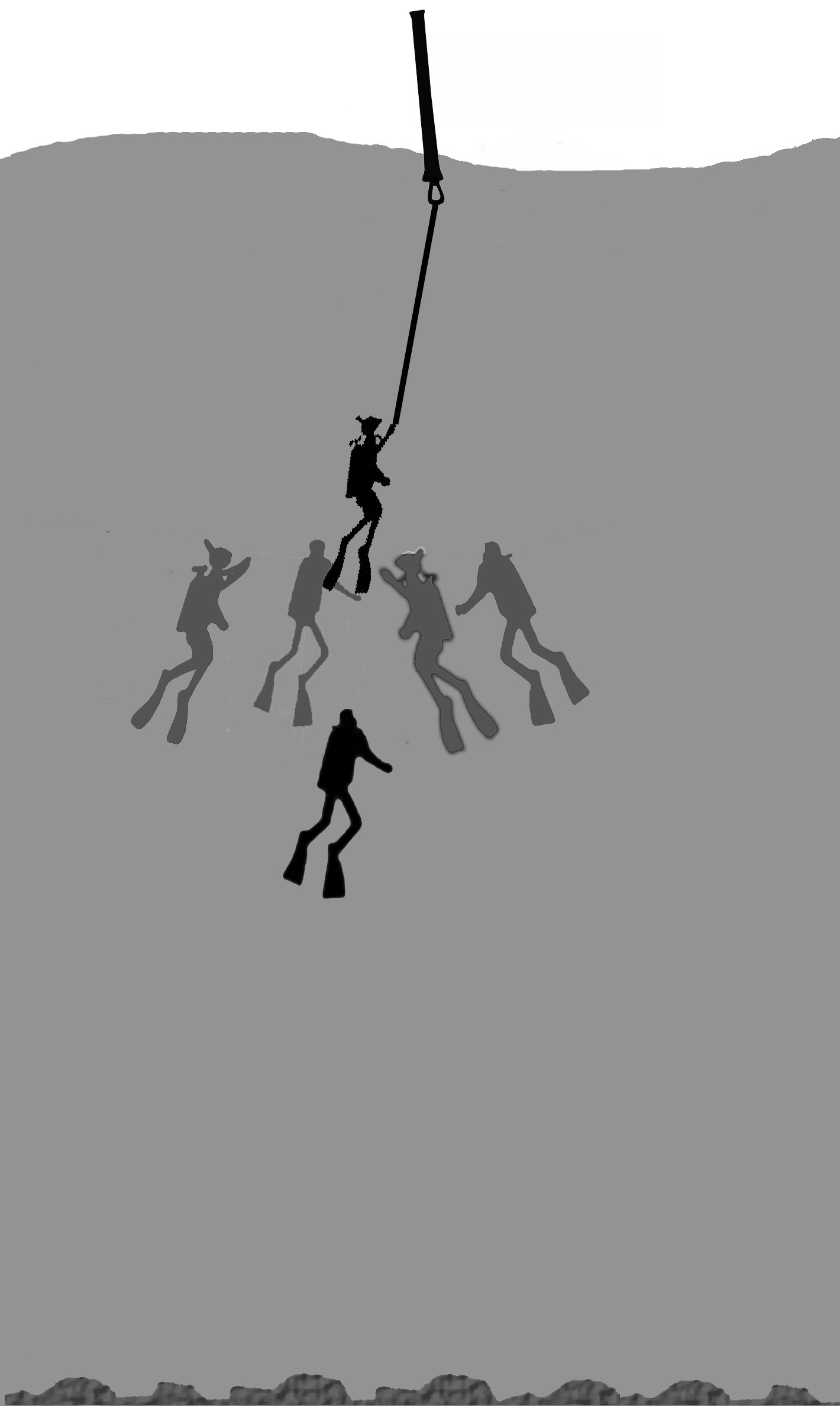
Use the signal float to warn the boat.

The assistant (or leader if there is no assistant) conducts a surface safety check, then everyone surfaces.
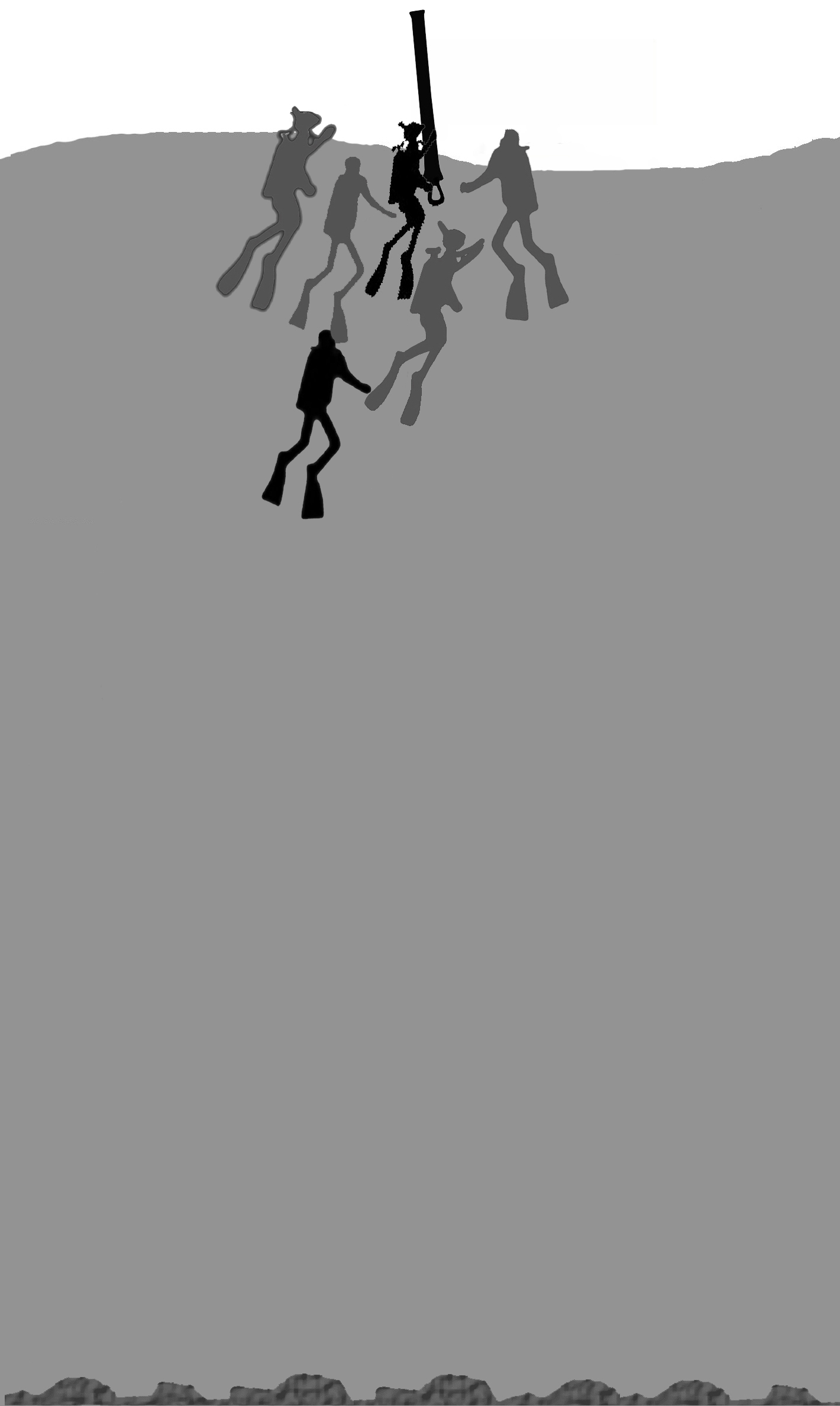
Gather everyone at the signal float.
|

